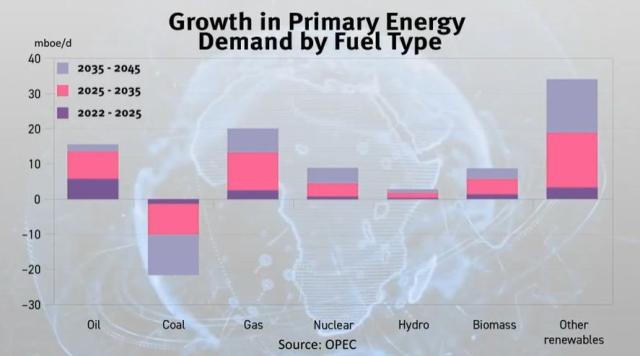In its monthly report, the Organization of the Petroleum Exporting Countries (OPEC) has projected a slight deceleration in global oil demand growth for the year 2024 compared to 2023, aligning with other economic forecasts.
According to OPEC, world oil demand is expected to rise by approximately 2.25 million barrels per day (bpd) in 2024, a marginal decrease from the growth of 2.44 million bpd anticipated for 2023. The report highlights the influence of solid global economic growth, especially driven by continued improvements in China, in propelling oil consumption in the coming year.
OPEC and its allies, collectively known as OPEC+, commenced supply restrictions in 2022 to support oil prices. The report acknowledges the potential impact on oil demand due to uncertainties and economic dynamics in OECD Europe and other regions in the remainder of 2023 and into 2024.
In a comparison of oil demand growth projections, the International Energy Agency (IEA) has presented a more conservative estimate, predicting a slowdown in demand growth for 2024. The IEA lowered its forecast for 2024 oil demand growth to 880,000 bpd, reflecting concerns about global economic conditions and progress in energy efficiency that may affect consumption.
The disparity in demand growth forecasts between OPEC and the IEA underlines the ongoing differences in views regarding the long-term outlook for oil demand and the required investment in new supplies. Oil demand growth is a critical indicator of market strength and has a direct impact on prices and fuel costs for consumers and businesses, shaping supply policy decisions by OPEC and OPEC+.
Both organizations align on this year’s demand growth projections, with the IEA recently revising its figure for 2023 to 2.3 million bpd, inching closer to OPEC’s unchanged forecast of 2.44 million bpd for the same period.
Despite the slight divergence in forecasts, the oil industry remains dynamic, influenced by various factors, including economic conditions, geopolitical events, and the transition towards cleaner energy sources. Continued monitoring and adjustment of projections will be essential to navigate the evolving landscape of global oil demand.

